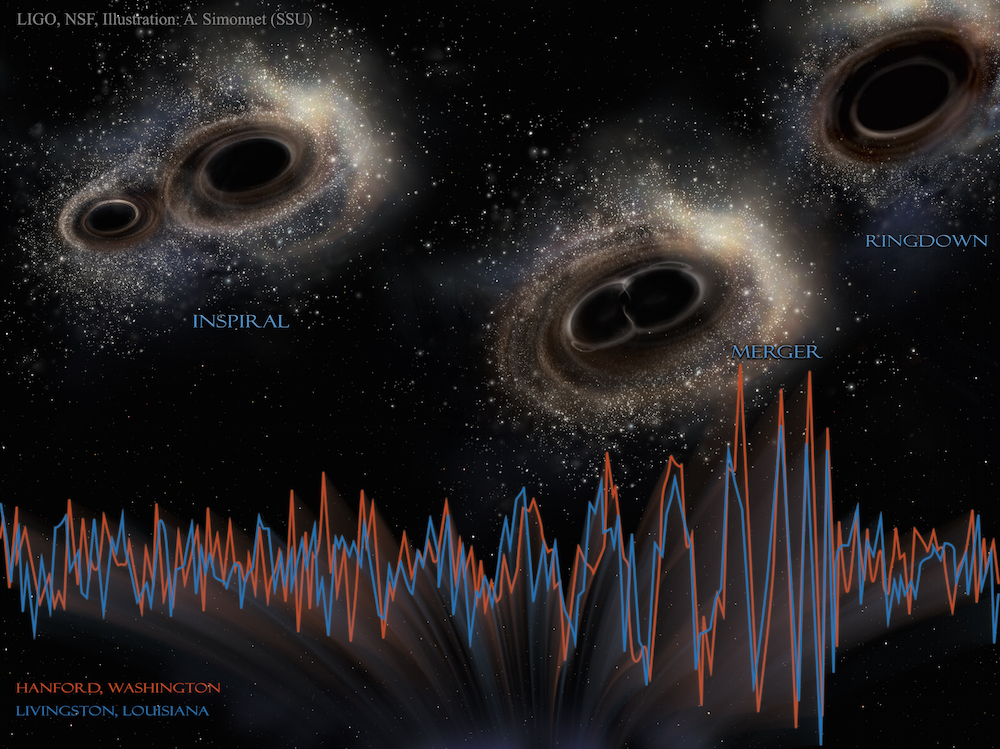
It may sound like a nondescript rumble — but it's actually the cosmic burp from a violent celestial event.
A new sound file released today (Feb. 11) reveals the sound of gravitational waves rippling through space-time as two black holes merge, forming one giant black hole.
"It's the first time the universe has spoken to us with gravitational waves," David Reitze, a physicist at the California Institute of Technology, said today in a news briefing.
To get the unforgettable sound, the researchers working with the Laser Interferometer Gravitational-Wave Observatory (LIGO) scientific collaboration used light signals collected at their detectors in Livingston, Louisiana, and Hanford, Washington, on Sept. 14, 2015, and converted them into sound waves. [8 Ways You Can See Einstein's Theory of Relativity in Real Life]
The LIGO uses a setup with laser beams, light detectors and mirrors to detect the faint shortening or lengthening of long distances that occurs as gravitational waves ripple through the Earth. The stretching and contracting of the fabric of space-time in response to gravitational waves is tiny — for the 2.5-mile-long (4 kilometers) arms of the detector, the change in distance is about a thousandfold smaller than the width of a proton.
In the historic event, two black holes about 1.3 billion light-years from Earth, and each roughly 30 times the mass of the sun, merged into one; the black holes spiraled around each other ever faster as they got closer. As they sped up, some of their mass was converted into energy in the form of gravitational waves. These cosmic ripples speed up in frequency and rises in amplitude as the black holes merge, then quickly die down once the union is complete, creating a kind of cosmic chirp.
Because the oscillations in the light signals received at the LIGO were within the human hearing range, the team directly translated the light frequencies into sound frequencies. The end result is that for the first time, Earthlings can actually hear the sound of two black holes colliding.
Sign up for the Live Science daily newsletter now
Get the world’s most fascinating discoveries delivered straight to your inbox.
Follow Tia Ghose on Twitter and Google+. Follow Live Science @livescience, Facebook & Google+. Original article on Live Science.

Tia is the managing editor and was previously a senior writer for Live Science. Her work has appeared in Scientific American, Wired.com and other outlets. She holds a master's degree in bioengineering from the University of Washington, a graduate certificate in science writing from UC Santa Cruz and a bachelor's degree in mechanical engineering from the University of Texas at Austin. Tia was part of a team at the Milwaukee Journal Sentinel that published the Empty Cradles series on preterm births, which won multiple awards, including the 2012 Casey Medal for Meritorious Journalism.










